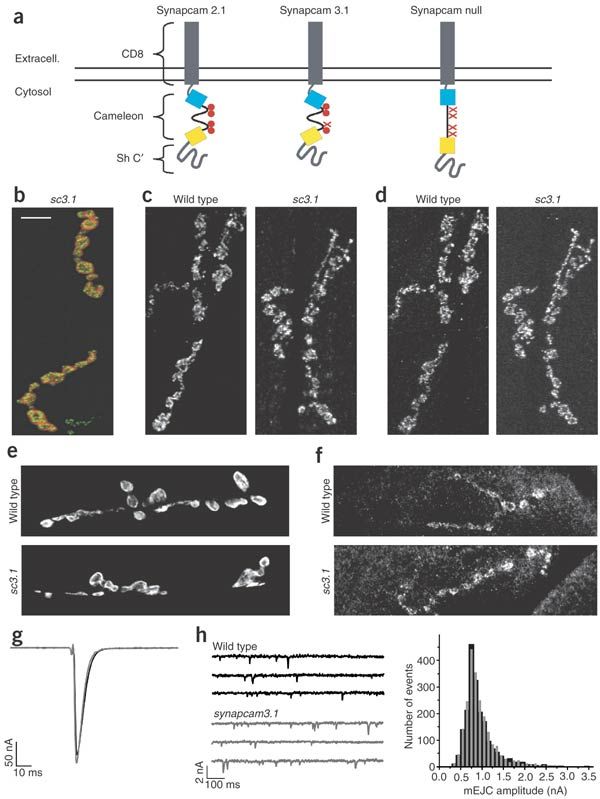
Heterogeneity in synaptic transmission along a Drosophila larval motor axon
Abstract
At the Drosophila melanogaster larval neuromuscular junction (NMJ), a motor neuron releases glutamate from 30–100 boutons onto the muscle it innervates. How transmission strength is distributed among the boutons of the NMJ is unknown. To address this, we created synapcam, a version of the Ca2+ reporter Cameleon. Synapcam localizes to the postsynaptic terminal and selectively reports Ca2+ influx through glutamate receptors (GluRs) with single-impulse and single-bouton resolution. GluR-based Ca2+ signals were uniform within a given connection (that is, a given bouton/postsynaptic terminal pair) but differed considerably among connections of an NMJ. A steep gradient of transmission strength was observed along axonal branches, from weak proximal connections to strong distal ones. Presynaptic imaging showed a matching axonal gradient, with higher Ca2+ influx and exocytosis at distal boutons. The results suggest that transmission strength is mainly determined presynaptically at the level of individual boutons, possibly by one or more factors existing in a gradient.